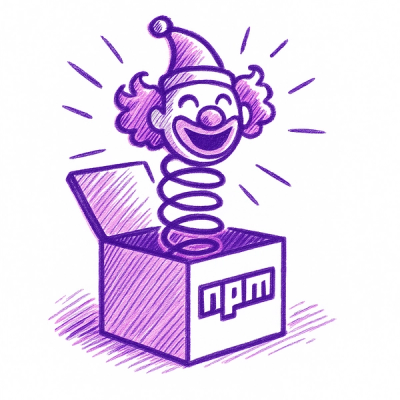django-fluent-blogs
.. image:: https://github.com/django-fluent/django-fluent-blogs/actions/workflows/tests.yaml/badge.svg?branch=master
:target: https://github.com/django-fluent/django-fluent-blogs/actions/workflows/tests.yaml
.. image:: https://img.shields.io/pypi/v/django-fluent-blogs.svg
:target: https://pypi.python.org/pypi/django-fluent-blogs/
.. image:: https://img.shields.io/pypi/l/django-fluent-blogs.svg
:target: https://pypi.python.org/pypi/django-fluent-blogs/
.. image:: https://img.shields.io/codecov/c/github/django-fluent/django-fluent-blogs/master.svg
:target: https://codecov.io/github/django-fluent/django-fluent-blogs?branch=master
This is a basic blogging engine, with the following features:
- Archive views by date, author, category and tags.
- Contents filled by django-fluent-contents_
- RSS and Atom feeds
- Granularity in templates to override layouts.
- Abstract base model for custom blog models.
Used applications:
- Categories based on django-categories-i18n_ (or django-categories_).
- Optional comments based on django-contrib-comments_
- Optional multilingual support based on django-parler_.
- Optional integration with django-taggit_ and django-taggit-autocomplete-modified_ for tag support
- Optional integration with django-fluent-comments_ for Ajax-based comments
- Optional integration with django-fluent-pages_
- Optional integration with django.contrib.sitemaps_
TODO:
- Have integration with blog publication protocols (like django-blog-zinnia_ provides), built in a similar way like django.contrib.syndication_ works.
Installation
First install the module, preferably in a virtual environment:
.. code-block:: bash
pip install django-fluent-blogs
# Install the plugins of fluent-contents that you use:
pip install django-fluent-contents[text]
# Optional: to add tagging support + autocomplete use:
pip install django-taggit django-taggit-autocomplete-modified
Configuration
Add the applications to settings.py:
.. code-block:: python
INSTALLED_APPS += (
# Blog engine
'fluent_blogs',
# The content plugins
'fluent_contents',
'fluent_contents.plugins.text',
# Support libs
'categories_i18n',
'django_wysiwyg',
'slug_preview',
# Optional commenting support
'django_comments',
# Optional tagging
'taggit',
'taggit_autocomplete_modified',
)
DJANGO_WYSIWYG_FLAVOR = "yui_advanced"
Note that not all applications are required;
tagging is optional, and so are the various fluent_contents.plugin.* packages.
Include the apps in urls.py:
.. code-block:: python
urlpatterns += patterns('',
url(r'^admin/util/taggit_autocomplete_modified/', include('taggit_autocomplete_modified.urls')),
url(r'^blog/comments/', include('django_comments.urls')),
url(r'^blog/', include('fluent_blogs.urls')),
)
The database can be created afterwards::
./manage.py migrate
In case additional plugins of django-fluent-contents_ are used, follow their
installation instructions <http://django-fluent-contents.readthedocs.org/en/latest/plugins/index.html>_ as well.
Typically this includes:
- adding the package name to
INSTALLED_APPS.
- running
pip install django-fluent-contents[pluginname]
- running
./manage.py syncdb
Configuring the templates
To display the blog contents, a fluent_blogs/base.html file needs to be created.
This will be used to map the output of the module to your site templates.
The base template needs to have the blocks:
content - displays the main contenttitle - the <head> title fragment.link - displays <link> tags for RSS feeds.script - includes additional <script> tags.meta-description - the value of the meta-description tag.meta-keywords - the value for the meta-keywords tag.og-type - the OpenGraph type for Facebook (optional)og-description the OpenGraph description for Facebook (optional)
The fluent_blogs/base.html template could simply remap the block names to the site's base.html template.
For example:
.. code-block:: html+django
{% extends "base.html" %}
{% block headtitle %}{% block title %}{% endblock %}{% endblock %}
{% block main %}
{# This area is filled with the blog archive/details:
{% block content %}{% endblock %}
{# Add any common layout, e.g. a sidebar here #}
{% endblock %}
When all other block names are already available in the site's base.html template,
this example should be sufficient.
The filename of the base template can also be changed by defining the FLUENT_BLOGS_BASE_TEMPLATE setting.
Comments
The commenting support can be based on django-contrib-comments_, or any other system of your choice.
To integrate django-contrib-comments_ with your site theme, also create a ``comments/base.html`` template that maps the blocks:
* ``title``
* ``content``
* ``extrahead`` (only for django-fluent-comments_)
Adding pages to the sitemap
---------------------------
Optionally, the blog pages can be included in the sitemap.
Add the following in ``urls.py``:
.. code-block:: python
from fluent_blogs.sitemaps import EntrySitemap, CategoryArchiveSitemap, AuthorArchiveSitemap, TagArchiveSitemap
sitemaps = {
'blog_entries': EntrySitemap,
'blog_categories': CategoryArchiveSitemap,
'blog_authors': AuthorArchiveSitemap,
'blog_tags': TagArchiveSitemap,
}
urlpatterns += patterns('',
url(r'^sitemap.xml$', 'django.contrib.sitemaps.views.sitemap', {'sitemaps': sitemaps}),
)
Integration with django-fluent-pages:
-------------------------------------
To integrate with the page types of django-fluent-pages_, don't include ``fluent_blogs.urls`` in the URLconf:
.. code-block:: python
urlpatterns += patterns('',
url(r'^admin/util/taggit_autocomplete_modified/', include('taggit_autocomplete_modified.urls')),
url(r'^blog/comments/', include('django_comments.urls')), # or fluent_comments.urls
)
Instead, add a page type instead:
.. code-block:: python
INSTALLED_APPS += (
'fluent_pages',
'fluent_blogs.pagetypes.blogpage',
)
A "Blog" page can now be created in the page tree of django-fluent-pages_
at the desired URL path.
Integration with django-fluent-comments:
----------------------------------------
To use Ajax-based commenting features of django-fluent-comments_, include it in ``settings.py``:
.. code-block:: python
INSTALLED_APPS += (
'fluent_blogs',
'fluent_comments', # Before django_comments
'django_comments',
...
)
Include the proper module in ``urls.py``:
.. code-block:: python
urlpatterns += patterns('',
url(r'^blog/comments/', include('fluent_comments.urls')),
...
)
This module will detect the installation, and enable the moderation features and include
the required CSS and JavaScript files to have a Ajax-based commenting system.
Integration with other commenting systems
-----------------------------------------
To use a different commenting system instead of django-contrib-comments_ (e.g. DISQUS_ or Facebook-comments_), override the following templates:
* ``fluent_blogs/entry_detail/comments.html``
These CSS/JavaScript includes are generated using:
* ``fluent_blogs/entry_detail/comments_css.html``
* ``fluent_blogs/entry_detail/comments_script.html``
Overriding the blog layout
--------------------------
To change the layout of the blog , the following templates can be overwritten:
In the archive/list page:
* ``fluent_blogs/entry_archive.html`` - the starting point, which includes all sub templates:
* ``fluent_blogs/entry_archive/item.html`` - a single list item (extends ``fluent_blogs/entry_contents_base.html``).
* ``fluent_blogs/entry_archive/empty.html`` - the default message when there are no entries.
* ``fluent_blogs/entry_archive/pagination.html`` - the pagination at the bottom of the page.
In the detail page:
* ``fluent_blogs/entry_detail.html`` - the starting point, which includes all sub templates:
* ``fluent_blogs/entry_detail/contents.html`` - the entry contents (extends ``fluent_blogs/entry_contents_base.html``).
* ``fluent_blogs/entry_detail/widgets.html`` - space to add Social Media buttons.
* ``fluent_blogs/entry_detail/comments.html`` - the comments.
* ``fluent_blogs/entry_detail/navigation.html`` - the entry navigation links
* ``fluent_blogs/entry_detail/page_footer.html`` - space below the comments to add Social Media buttons.
* ``fluent_blogs/entry_detail/comments_css.html``
* ``fluent_blogs/entry_detail/comments_script.html``
Common appearance:
* ``fluent_blogs/entry_contents_base.html`` - the common appearance of entries in the archive and detail page.
* ``fluent_blogs/base.html`` - the base template, e.g. to introduce a common sidebar.
Shared entry layout
When the layout of individual entries is shared with
- By default, the contents
fluent_blogs/entry_archive/item.html and , based on fluent_blogs/entry_archive/item.html by default
Custom entry models
This applications supports the use of custom models for the blog entries.
Include the following setting in your project:
.. code-block:: python
FLUENT_BLOGS_ENTRY_MODEL = 'myapp.ModelName'
This application will use the custom model for feeds, views and the sitemap.
The model can either inherit from the following classes:
-
fluent_blogs.models.Entry (the default entry)
-
fluent_blogs.base_models.AbstractEntry (the default entry, as abstract model)
-
A mix of fluent_blogs.base_models.AbstractEntryBase combined with:
-
fluent_blogs.base_models.ExcerptEntryMixin
-
fluent_blogs.base_models.ContentsEntryMixin
-
fluent_blogs.base_models.CommentsEntryMixin
-
fluent_blogs.base_models.CategoriesEntryMixin
-
fluent_blogs.base_models.TagsEntryMixin
When a custom model is used, the admin needs to be registered manually.
The admin can inherit from either:
fluent_blogs.admin.AbstractEntryBaseAdminfluent_blogs.admin.EntryAdmin
The views are still rendered using the same templates, but you can also override:
myapp/modelname_archive_*.htmlmyapp/modelname_detail.htmlmyapp/modelname_feed_description.html
Contributing
This module is designed to be generic, and easy to plug into your site.
In case there is anything you didn't like about it, or think it's not
flexible enough, please let us know. We'd love to improve it!
If you have any other valuable contribution, suggestion or idea,
please let us know as well because we will look into it.
Pull requests are welcome too. :-)
.. _DISQUS: http://disqus.com/
.. _django-blog-zinnia: http://django-blog-zinnia.com/documentation/
.. _django.contrib.syndication: https://docs.djangoproject.com/en/dev/ref/contrib/syndication/
.. _django-contrib-comments: https://django-contrib-comments.readthedocs.io/
.. _django.contrib.sitemaps: https://docs.djangoproject.com/en/dev/ref/contrib/sitemaps/
.. _django-categories: https://github.com/callowayproject/django-categories
.. _django-categories-i18n: https://github.com/django-parler/django-categories-i18n
.. _django-fluent-comments: https://github.com/django-fluent/django-fluent-comments
.. _django-fluent-contents: https://github.com/django-fluent/django-fluent-contents
.. _django-fluent-pages: https://github.com/django-fluent/django-fluent-pages
.. _django-parler: https://github.com/django-parler/django-parler
.. _django-polymorphic: https://github.com/bconstantin/django_polymorphic
.. _django-taggit: https://github.com/alex/django-taggit
.. _django-taggit-autocomplete-modified: http://packages.python.org/django-taggit-autocomplete-modified/
.. _Facebook-comments: https://developers.facebook.com/docs/reference/plugins/comments/



